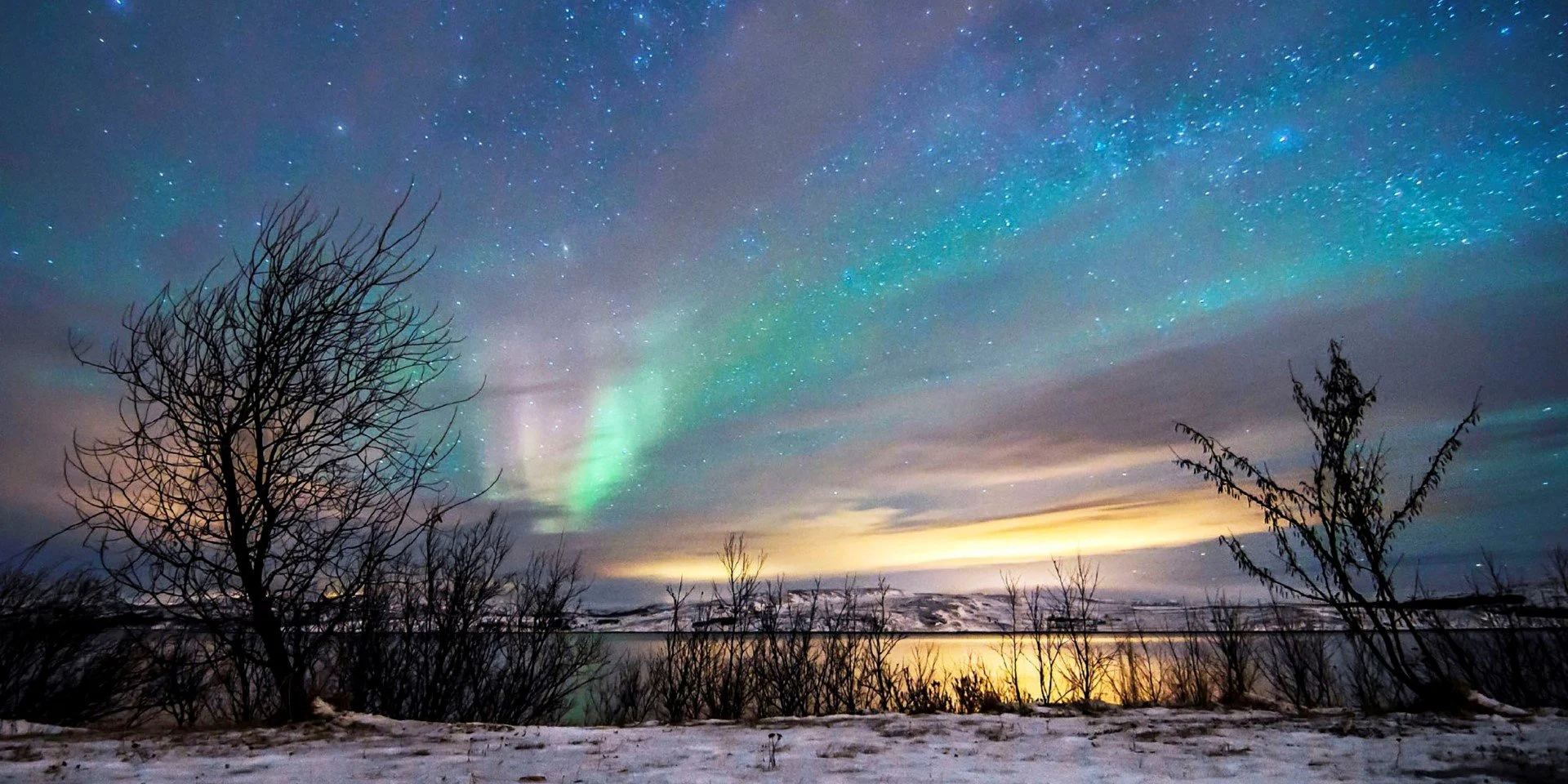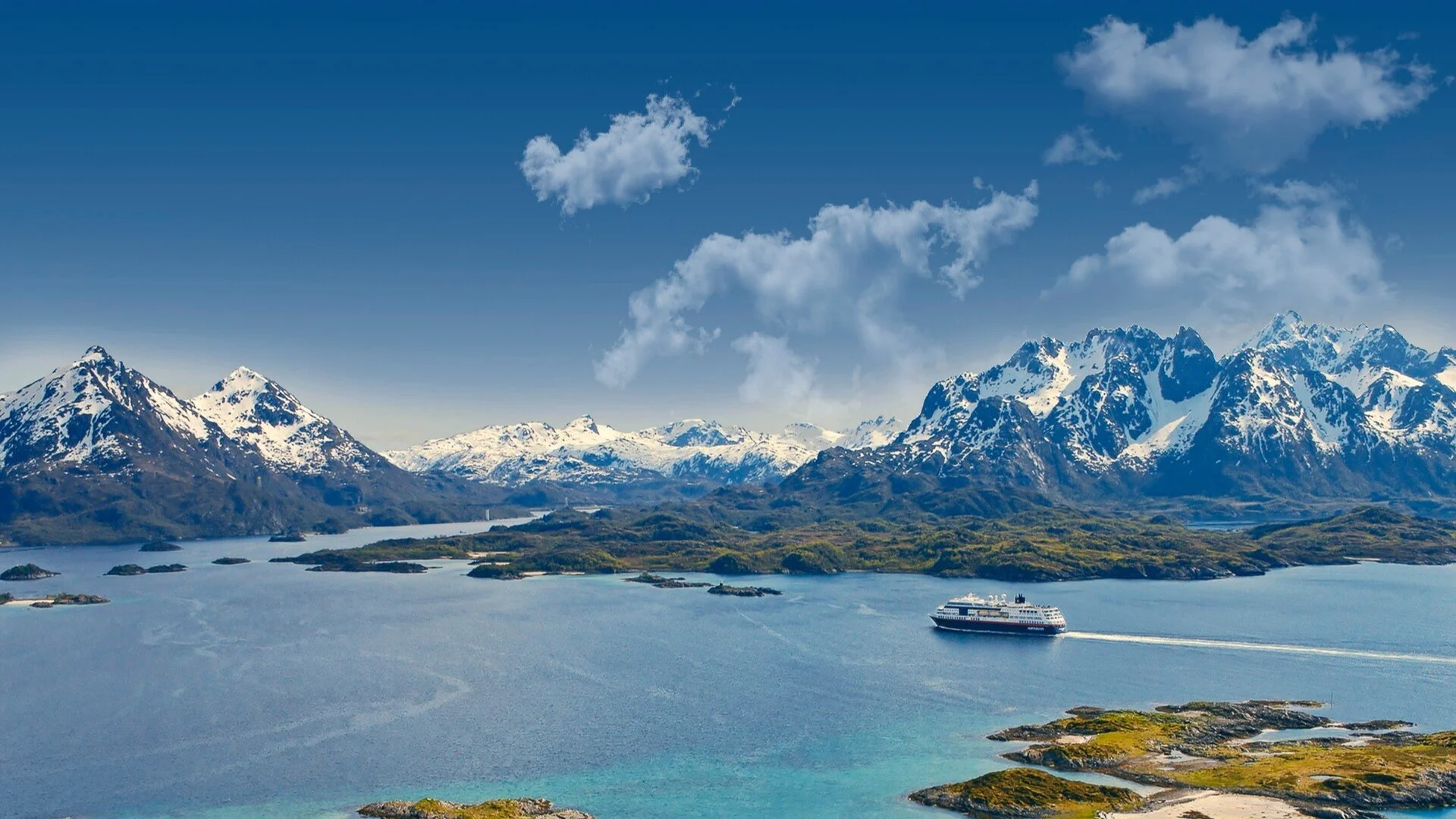Solar Maximise your chances of seeing the Northern Lights
Scientists predict the Solar Maximum in 2024-25 will result in the most frequent and impressive Northern Lights displays in more than a decade.
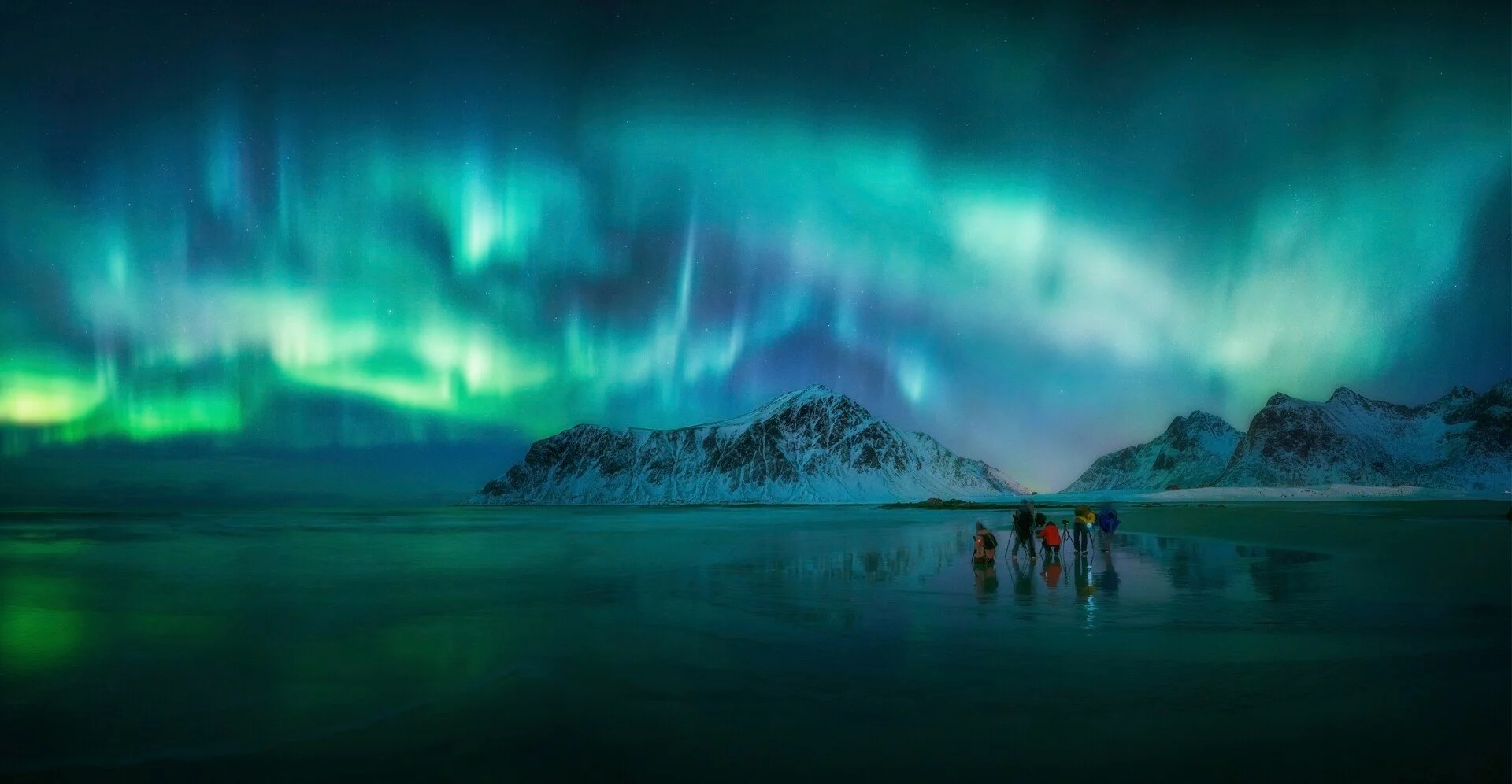
What is the Solar Maximum?
The Solar Maximum, which occurs approximately halfway through the Solar Cycle, produces “dramatically more” auroral displays to light up the night sky, says Darren Baskill, a physics and astronomy lecturer at Sussex University. As a result – according to Dr Pål Brekke, a solar physicist at the Norwegian Space Agency – we are expected to see ‘the most frequent and intense Northern Lights displays’, starting in 2024 and potentially lasting through to 2026.
“Over the course of 11 years [the approximate length of a Solar Cycle], the magnetic field between the Sun’s northern and southern hemispheres winds up until it becomes so dense that the hemispheres flip. The north hemisphere becomes the south and vice versa,” explains Baskill.
This flipping point marks the Solar Maximum, a period of increased solar activity. It’s associated with a greater number of sunspots observable on the Sun’s surface. By contrast, the Solar Minimum, which marks the beginning and end of each Solar Cycle, has fewer sunspots.
Our Chief Aurora Chaser, astronomer Tom Kerss reassures us that “the reversal of the solar magnetic field is nothing to be feared. It’s been happening for billions of years, and the tension it releases provides the ingredients for fantastic auroral displays”.

When will the Solar Maximum occur?
We have been in Solar Cycle 25 since December 2019, so we’re approaching the scheduled half-way point of the current cycle. Scientists at both NASA and NOAA have confirmed that the Sun has reached its solar maximum period, which could continue for another 12 months. But we won’t know when the Solar Maximum has reached its peak until about six months after it passes.
Around the Maximum, auroral activity surges, and then gradually begins to decrease in the following years. Scientists predict that this Maximum could have a long tail, offering several seasons of particularly rough space weather, and that’s ideal for aurora-chasers.
It’s great news for anyone considering a Northern Lights cruise in 2024-25. There won’t be a better time to see the Northern Lights until 2035, when the next Maximum comes around in the Sun’s 11-year cycle.
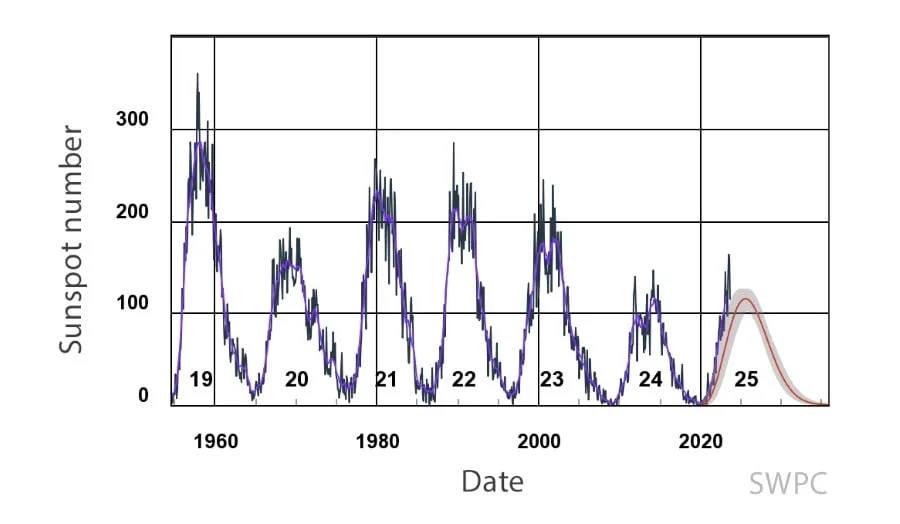
Chain reaction: sunspots and solar wind
When the Solar Maximum occurs, there’s an increase in the number of visible sunspots on the face of the Sun. These dark regions appear where the tangling of the magnetic field restricts convection in the region under the Sun’s surface. Solar flares erupt around these sunspots. In some cases, giant solar storms, known as coronal mass ejections, will also flow out from sun.
Tom Kerss tells us these flares and storms affect and “punch holes” in the solar wind, which are streams of particles escaping the Sun and flooding the Solar System in all directions, including towards our home of Earth.

Thankfully, Earth has the magnetic field, also known as the magnetosphere. It protects our planet from the harsh radiation environment of the solar wind. It also captures some of the solar wind particles, accelerating them to incredible energies.
The magnetic field is most dense around the geomagnetic poles. Here, incoming solar wind particles are energetic enough to excite atoms in the ionosphere high above our heads, resulting in the beautiful auroral displays we see in Northern Norway.
By monitoring the Solar Maximum, sunspot activity, solar flares, and solar storms, scientists can get a good picture of the solar wind. They also have satellites like DSCOVR which track the incoming particles. Depending on the density, speed, and magnetic properties of the solar wind, they can forecast how active auroras are likely to be throughout the night.
Rainclouds vs. solar flares
Unlike the Solar Maximum, cloud cover is difficult to forecast accurately. But your chances of cloud-free skies are better on a cruise, says physicist and astronomer Dr John Mason.
“You can never guarantee there will be a clear sky but at least on a Hurtigruten voyage, the ship is travelling 12 to 14 knots, so the weather changes often. This means, even if it’s cloudy in one area, the ship will often move on to clear patches of sky, providing many more opportunities to see the Northern Lights.”
How to maximise the Solar Maximum
As well as planning a cruise to see the Northern Lights during the 2024-25 Solar Maximum, there are other steps you can take to increase your chances of catching an auroral display.

Sail with us between September and March
This is when the skies are darkest. Northern Norway is directly beneath the Auroral Oval and is consistently ranked as one of the best places in the world for seeing the aurora borealis.

Keep your evenings free for sky gazing
The aurora is most likely to make an appearance between 17:00 and 02:00. From out on the ship’s deck, you might even see the Northern Lights filling the entire night sky rather than simply glowing on the horizon.

Plan your Northern Lights cruise to coincide with a new moon
The brightness of a full moon can make the Lights seem dimmer by comparison.
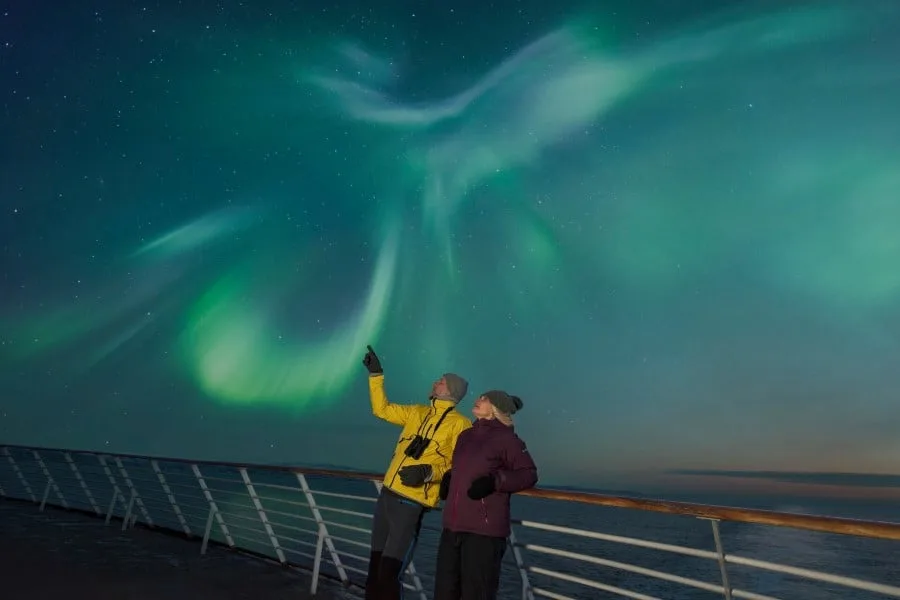
Avoid light pollution
Places with wide-open skies and no light pollution are best for seeing the Northern Lights. A cruise is perfect. At sea, light pollution is minimal to non-existent, and the Arctic skies are unobstructed and huge.
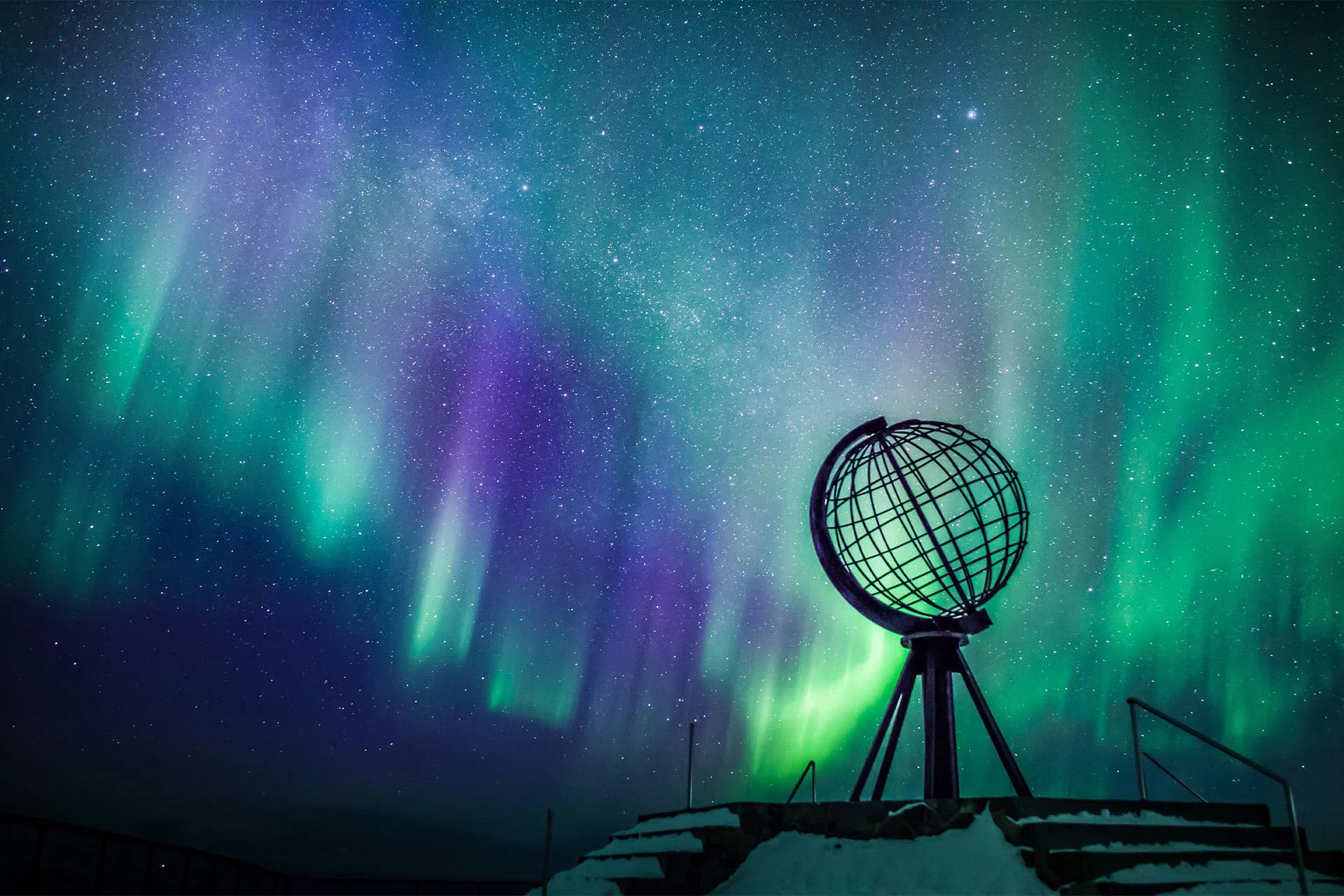
Take advantage of our Northern Lights Promise
If the Northern Lights don’t make an appearance during your Northern Lights voyage of 11 days or more, you’ll get another 6- or 7-day voyage for free.
